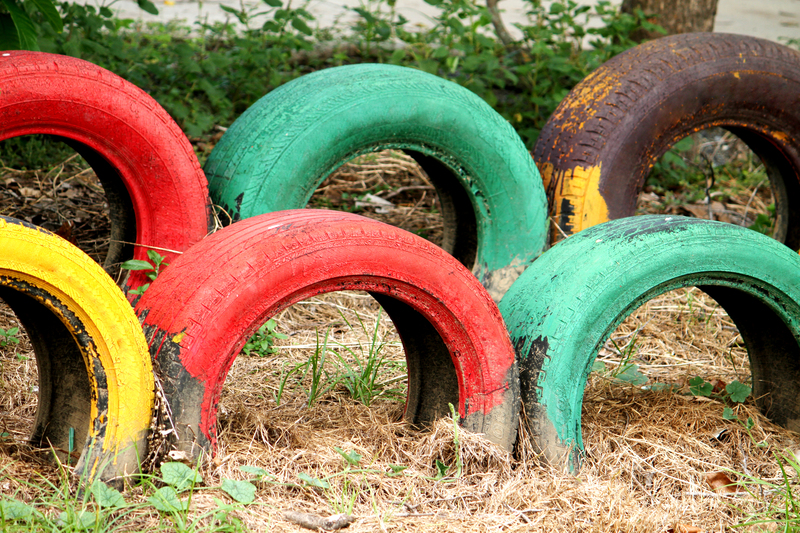Ways to Safely Discard Redundant Electronic Chargers: An Eco-Friendly Guide
In a world where technology is rapidly evolving, it's common for homes and offices to accumulate a tangle of old chargers for phones, laptops, tablets, and other electronic devices. Disposing of these redundant electronic chargers improperly can harm the environment, contribute to the growing problem of e-waste, and waste valuable resources. This comprehensive guide will help you learn about various ways to safely discard unwanted electronic chargers and why responsible disposal is crucial for a cleaner planet.

Why It's Important to Safely Discard Old Electronic Chargers
As we upgrade our gadgets, most of us forget about the chargers we no longer use. Throwing these redundant chargers into the trash may seem convenient, but it's far from environmentally friendly. Electronic chargers contain metals, plastics, and sometimes hazardous components that can leach into the soil and water, causing pollution and potentially affecting human health.
- Environmental Impact: Chargers contribute to the global e-waste crisis when disposed of irresponsibly.
- Resource Recovery: Many chargers contain valuable metals that can be recovered and reused.
- Legal Regulations: Some regions have strict laws against improper e-waste disposal.
Proper disposal methods ensure that these materials are handled safely, reducing environmental harm and promoting sustainability.
Understanding What Makes a Charger E-Waste
Before we dive into the various methods to safely discard redundant electronic chargers, it's important to define what qualifies as e-waste. E-waste (electronic waste) refers to anything with electrical components or circuitry that's no longer wanted or functional. Chargers fall into this category, alongside items like cables, adapters, power banks, and old electronic devices.
Components of a Typical Electronic Charger
- Plastic casing
- Metal wires and contacts (often copper, gold, or aluminum)
- Electric circuits and resistors
- Printed Circuit Boards (PCBs), sometimes containing hazardous substances
Each of these components requires different handling when disposed of, making it even more important to choose the right method for discarding your redundant chargers.
Best Practices for Safely Discarding Redundant Electronic Chargers
Now, let's dive into the most effective and environmentally responsible ways to safely get rid of your old chargers:
1. Recycle at Certified E-Waste Collection Centers
Recycling is the most recommended way to discard redundant electronic chargers safely. E-waste collection centers are specially equipped to handle, sort, and process chargers, extracting valuable materials and safely disposing of any hazardous substances.
- Why Choose E-Waste Centers? These centers ensure compliant and secure recycling, preventing hazardous waste from reaching landfills.
- How to Find a Center: Search online for local "e-waste recycling near me" or "electronic waste disposal" services. Many electronic stores and municipal waste facilities offer drop-off points.
- Tip: Some organizations even host electronic recycling drives--keep an eye out for local events.
2. Use Take-Back or Trade-In Programs
Many electronics brands have take-back programs for old accessories. Returning chargers to manufacturers or retailers ensures they are processed responsibly.
- Apple & Samsung: These companies have recycling initiatives that include chargers and other accessories.
- Local Retailers: Big box stores such as Best Buy or Staples often have electronic recycling bins in-store.
- Check the company website for details about what they accept and whether you'll receive any incentives for participation.
3. Donate to Charities or Community Groups
Donating old but working chargers is a meaningful way to discard them. Charities, community organizations, or schools may be able to put them to good use, especially in underserved areas where electronics are reused for longer.
- Check Local Need: Contact community centers, shelters, or non-profits to see if there's a demand for your type of charger.
- Schools and Libraries: Many educational institutions accept donations of redundant chargers for students in need.
- Always test chargers and ensure they're functional and safe before donating.
4. Participate in Mail-In Recycling Programs
Some organizations offer mail-in recycling services for small electronics, including chargers and cables. These programs typically provide you with a shipping label for easy and safe mailing.
- Call2Recycle, TerraCycle, and other companies offer specialized recycling solutions for electronic accessories.
- Environmental Convenience: Ideal for those without nearby recycling centers or for bulk disposal.
5. Upcycle or Reuse for Creative Projects
If you're feeling resourceful, you can repurpose old chargers for DIY projects. While not always the primary disposal method, upcycling can breathe new life into redundant chargers and keep them out of the waste stream.
- Cable Management: Use old chargers for cable tie or organizational purposes.
- DIY Electronics: Hobbyists can salvage wires or circuits for small-scale tech projects.
- Art Projects: Cords and plugs can be transformed into unique artwork or jewelry.
Upcycling is a creative way to sustainably extend the life of redundant electronic accessories when possible.
6. Check Local Hazardous Waste Programs
Some regions classify e-waste, including chargers, as hazardous waste. Contact your local municipality for guidance on safe disposal methods and collection events.
- Scheduled Collection Days: Many cities hold special e-waste collection days several times a year.
- Household Hazardous Waste Facilities: These often accept chargers, adapters, and other small electronics.
Mistakes to Avoid When Discarding Old Chargers
To ensure safe and responsible disposal, avoid these common pitfalls:
- Do Not Throw Chargers in Household Trash: They can end up in landfills, leaking hazardous materials into the environment.
- Avoid Illegal Dumping: In some areas, this can result in fines or penalties.
- Don't Mix with Regular Recycling: Most curbside recycling programs cannot process electronics.
- Check Device Compatibility: Don't assume a charger is obsolete--someone may need it.
By following the correct procedures and being mindful of regulations, you help reduce e-waste and protect the planet.
Steps to Prepare Old Chargers for Safe Disposal
Before dropping your redundant electronic chargers off for recycling or donation, take these precautionary steps:
- Remove Any Personal Information: While chargers themselves don't store data, some can be attached to smart accessories. Wipe or reset anything with memory.
- Untangle and Organize: Coil wires neatly; use rubber bands to keep everything tidy. This helps in handling and sorting at disposal facilities.
- Group by Type: If discarding multiple chargers, separate by device (e.g., phone, laptop, tablet).
- Test for Functionality: Confirm if they work, especially if donating.
- Remove Batteries: If your charger includes a battery (e.g., power banks), follow battery recycling protocols.
The Benefits of Responsible Charger Disposal
Properly discarding redundant electronic chargers offers multiple advantages for people and the planet:
- Resource Conservation: Recycling recovers metals and materials that can be reused in new products.
- Pollution Reduction: Prevents harmful chemicals from contaminating soil and water.
- Compliance: Helps you stay within local e-waste disposal laws and regulations.
- Community Support: Donating chargers can aid those in need or schools facing technology shortages.
- Environmental Awareness: Sets an example and raises awareness about the importance of e-waste management.
Global Perspective: E-Waste Challenges
The United Nations reports that around 53.6 million metric tons of e-waste are generated worldwide each year. Chargers and cables represent a significant portion of this waste stream. By responsibly disposing of our redundant electronic accessories, we help slow the growth of global e-waste and support the recycling economy.

Frequently Asked Questions on Discarding Old Chargers
-
Can I throw chargers in the regular trash?
No. Throwing chargers in the trash releases harmful chemicals and contributes to landfill waste. Always seek a recycling or e-waste solution. -
What happens to chargers after recycling?
They are dismantled, sorted, and their materials like metals and plastics are recovered for manufacturing new products. -
Can old chargers be sold?
If still functional, you can sell or give them away using online marketplaces or community groups. -
How do I know if my charger is recyclable?
Most chargers can be recycled at e-waste facilities. Contact your local recycling center for specifics.
Conclusion: Making a Difference with Safe Disposal
Safely discarding redundant electronic chargers is a small but significant step every individual can take to tackle the mounting issue of electronic waste. Whether it's through certified recycling centers, take-back programs, donations, upcycling, or participation in mail-in recycling schemes, there are numerous eco-friendly and secure ways to dispose of old chargers. By following these best practices, you directly contribute to protecting the environment, preserving valuable resources, and fostering a sustainable future for generations to come.
If you're looking to part ways with old chargers, remember--responsible electronic accessory disposal is the key to a greener tomorrow. Let's all do our part and encourage others to join in making these environmentally conscious choices!
```